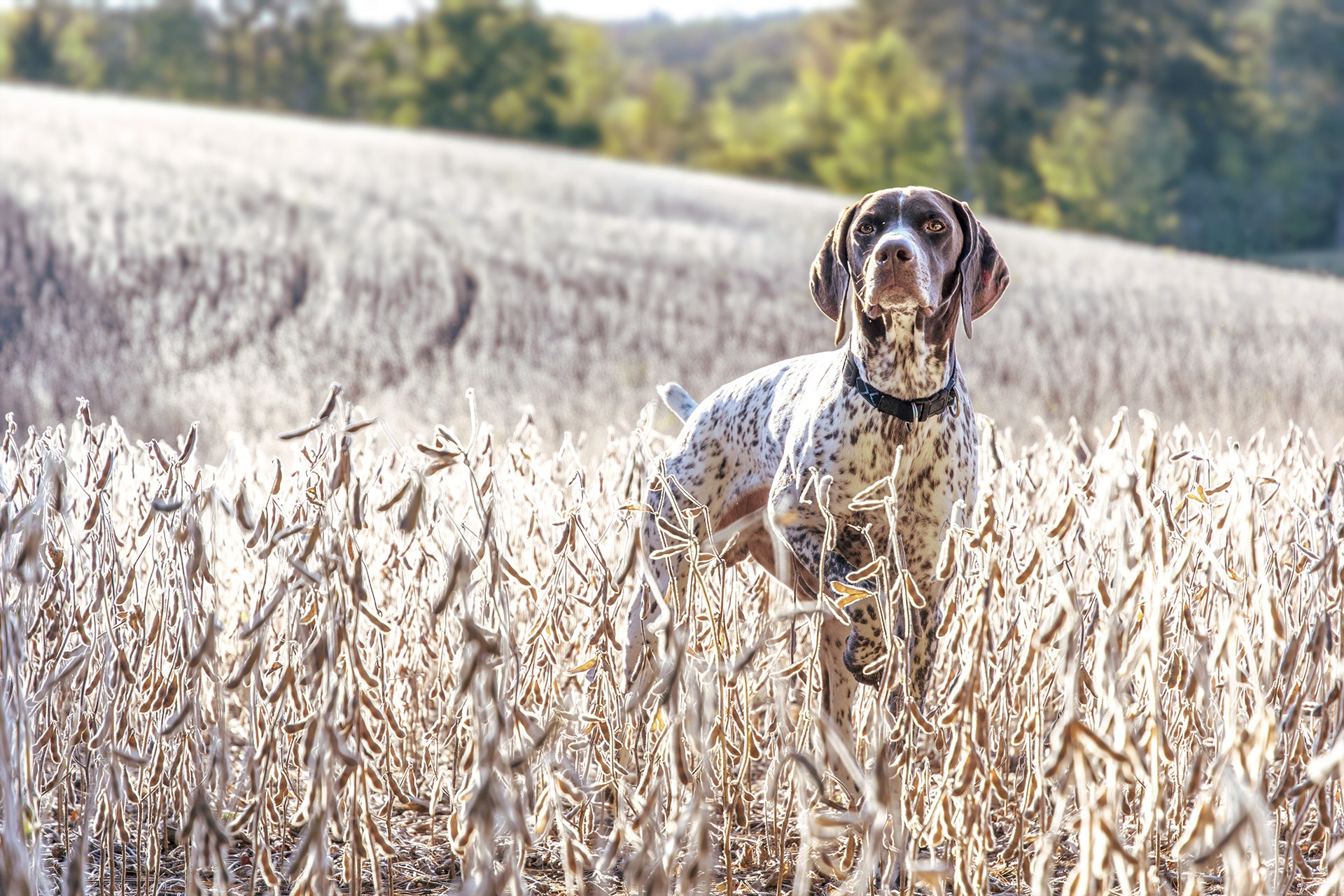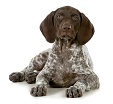
The German Shorthaired Pointer is a medium to large sized breed of pointing dog developed in Germany.
It is an intelligent, bold, boisterous, eccentric, and characteristically affectionate dog that is cooperative and easily trained. This breed is smart, friendly, willing, and enthusiastic.
A versatile hunting breed, being an all-purpose gun dog suitable for both land and water, they are streamlined yet powerful with strong legs.
While a hunting breed that retains strong drive to find and chase game, they are extremely energetic and can excel at a wide variety of dog sports.
The German Shorthaired Pointer was developed to be a dog suited for family life, as well as a versatile hunter.

This breed is a quick learner that thrives on having a job to do. Considering that this dog breed was bred to spend hours with hunters tracking, pointing, and retrieving game, they have a tireless work ethic that needs to be channeled into positive activity.
German shorthaired pointers have also been used to guard homes, pull sleds, and sniff for bombs. They have a variety of different attributes that make them perfect for any job in and out of the water.
The German Shorthaired Pointer requires serious exercise: running, swimming, long walks, playing in a fenced area, and anything else you can do to take the edge off their energy.
The average lifespan of the German Shorthaired Pointer is 12 to 14 years.
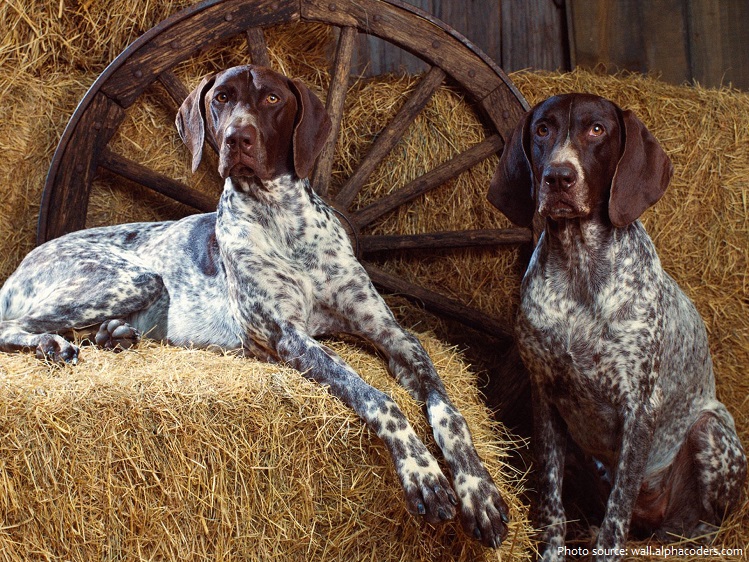
Males are 58 to 64 cm (23 to 25 inches) tall at the shoulder and weigh 25 to 32 kg (55 to 70 pounds). Females are 53 to 59 cm (21 to 23 inches) tall at the shoulder and weigh 20 to 27 kg (44 to 60 pounds).
The German Shorthaired Pointer’s coat is short and flat with a dense undercoat protected by stiff guard hairs making the coat water resistant and allowing the dog to stay warm in cold weather. This allows the German Shorthaired Pointer to be an agile hunter with high performance in both field and water.
The color can be a dark brown with some lighter brown colors, referred to as “liver”, black, white, liver roan, or liver and white. Commonly, the head is a solid or nearly solid color, and the body is speckled or “ticked” with liver and white, sometimes with large patches of solid color called “saddles.” Roan coats are also common, with or without patching. Solid liver and solid black coats also occur, often with a small blaze of ticking or white on the chest.
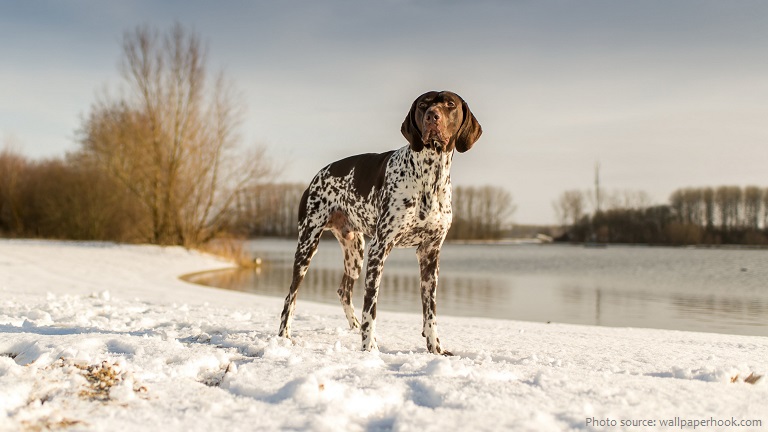
They have moderately long floppy ears set high on the head. Longer, broad, and strong, muzzles allow retrieval of heavier game. The dog’s profile should be straight or strongly Roman nosed – any dished appearance to the profile is incorrect according to breed standards. Their eyes are generally brown, with darker eyes being desirable – yellow or “bird of prey” eyes are a fault. The tail is commonly docked, although this is now prohibited in some countries.
German Hunters spent generations cross different breeds until the German Shorthaired Pointer came during the 1800s.
The turning point in the breed’s acceptance came with the heralded abilities of two dogs in the early 1800s. These dogs, “Nero” and “Treff,” are credited as being the modern German shorthaired pointer’s founding fathers.
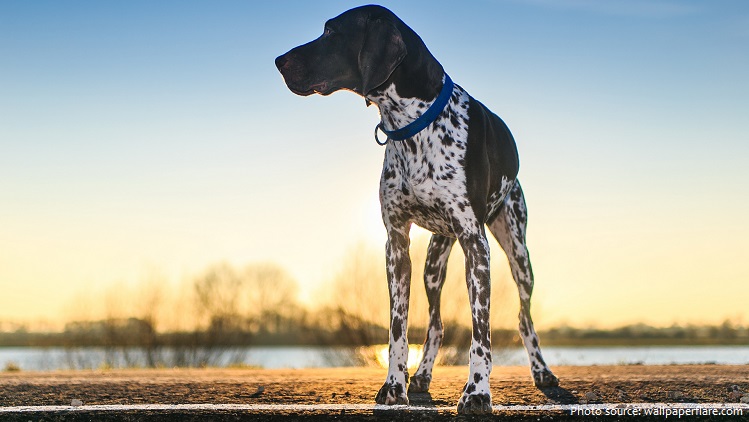
It is likely that the German Shorthaired Pointer is descended from a breed known as the German Bird Dog, which itself is related to the Old Spanish Pointer introduced to Germany in the 17th century. It is also likely that various German hound and tracking dogs, as well as the English Pointer and the Arkwright Pointer also contributed to the development of the breed.
However, as the first studbook was not created until 1870, it is impossible to identify all of the dogs that went into creating this breed.
Throughout Europe and into the United States, hunters quickly recognized how capable the German Shorthaired Pointer was on the hunt for small game or as a duck hunter’s dream dog. In fact, this dog breed loves to swim and has webbed feet and an agile yet athletic body that is well-suited for water retrieving.

The German Shorthaired Pointer breed was first imported to the UK in the early 1920’s and then brought to the United States in the mid 1920’s. The breed was officially recognized by the American Kennel Club in 1930.
Today, this is the 9th most popular AKC dog breed. It’s clear that these dogs are an obvious choice for sportsmen seeking a steady hunting dog, but they’re also popular with individuals and families that want a ready-to-go active canine companion.
The German Shorthaired Club of America advocates for the development of a dog that excels in the field and in the show ring. A ‘dual champion’ is a dog that has succeeded at the highest levels in both types of competition. This versatility is a clear example of what makes the GSP so popular and is a testament to the commitment of the breed’s enthusiasts.
Usually, the average price of a German Shorthaired Pointer puppy from a reputable breeder is between $800 and $1,500, while a top-quality German Shorthaired Pointer puppy can cost as high as $3,000 and upward. The
price depends on the dog’s lineage, conformation to breed standards, age, and training.
Though your German Shorthaired Pointer might look physically mature by the age of six months, it can take a few years for these dogs to mature out of puppy behaviors—which equates to a puppy with the strength of a full-grown dog.
